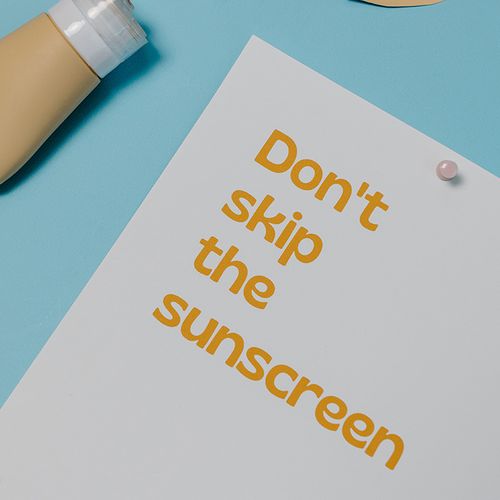After her dermatologist diagnosed the spot on her nose as the skin cancer basal O cell carcinoma (BCC), Lana went online to check out photos of other patients. She was shocked by some of the images and terrified of ending up with a huge scar.
Fortunately, Lana's doctor was skilled in a treatment called Mohs micrographic surgery. After weighing her options, Lana went ahead with the surgery-and now she describes the technique as "literally face-saving."
BCC, the most common skin cancer in the US, is rarely fatal but can be disfiguring, explained Mohs expert Margaret W. Mann, MD, an assistant professor of dermatology at Case Western Reserve University School of Medicine in Cleveland. It develops in the bottom of the epidermis (outermost layer of skin). What is visible on the surface is the tip of the iceberg." with more tumor cells growing downward and outward into surrounding skin-like the roots of a tree. The cancer most often occurs on the face, scalp or neck but can develop anywhere. Lana's nose lesion emerged as a red, raised spot that itched, flaked, bled, healed and then returned repeatedly. In other cases, BCC appears as a waxy bump...flat, scaly, brown or flesh-colored patch...crusty or cozy lesion...or sore with a sunken center.
If you notice any such spot: See a dermatologist immediately. "The longer you leave it, the larger it grows, so the larger the scar will be when it's removed," Dr. Mann cautioned.
Treatment options for BCC include excision (cutting out the tumor)...curettage and electrodesiccation (scraping off the tumor, then cauterizing the base to destroy any remaining abnormal cells)...cryosurgery (freezing)...radiation...and laser. With these methods, the surgeon must estimate how much tissue to treat, which can lead to unnecessary removal of healthy tissue and/or tumor recurrence if any cancer is inadvertently left behind.
What makes Mohs different is that it allows the surgeon to precisely identify and remove the entire tumor-virtually eliminating the chance that it will grow back and thus providing the highest success rate among treatments while it leaves surrounding healthy tissue intact to minimize scarring.
How it works: Mohs is usually performed as an outpatient procedure under local anesthesia. The tumor is shaved off in ultra-fine layers, one layer at a time, and each bit of tissue is immediately examined under a microscope. A special dye allows the surgeon to distinguish normal cells from cancer cells. The surgeon can then map the exact location of each projecting "root" of the tumor, so that—layer by layer-every last microscopic portion of cancer can be removed without undue harm to healthy tissue. Although time-intensive, the technique's cure rate is near 99%, Dr. Mann said. For an infographic on the method, visit http://bit.ly/iKNVMI and click on the Step-by-Step Process icon.
Another unique aspect of Mohs is that wound reconstruction usually is done immediately because there is no need to wait for a pathologist's report to confirm that the cancer is gone. Depending on the wound's size, it may be stitched...or a graft of skin may be taken from elsewhere...or a flap of living tissue from an adjacent area may be used to fill in the wound. If the treated area is very extensive, plastic surgery may be performed later.
Mohs typically costs more than other types of BCC treatment-and those other methods often work fine, depending on the tumor's extent and location. But Mohs generally is considered the treatment of choice for BCC that is large, deep, fast-growing, irregularly shaped, recurrent or located near scar tissue or on the face.
Dental Plaque and Cancer
In a recent study, scientists tracked almost 1,400 healthy adults (average age 40) for 24 years.
Findings: Of the 58 people who died prematurely, cancer was the most common cause of death. Additionally, those who died of cancer had more dental plaque on their teeth and gums than those who did not die prematurely. In fact, dental plaque was found to increase risk for premature death due to cancer by 79%-perhaps due to a systemic inflammatory response.
Discuss your options with your doctor and your insurance company.
Many doctors perform Mohs, but for the best outcome, Dr. Mann recommended using a boardcertified dermatologist who is a member of the American College of Mohs Surgery (ACMS). Membership in ACMS requires completion of a one-to two-year fellowship training program and at least 500 supervised Mohs surgery cases-so these physicians are specially trained as cancer surgeons, pathologists and reconstructive surgeons. Visit www.mobscollege.org and click on "Find an ACMS Mohs surgeon."
Important news: A recent study from Brown University revealed that patients who have had one BCC are likely to have multiple carcinomas over time-suggesting that this type of cancer should be considered a chronic disease. So even after your BCC is successfully treated, it is best to remain on guard for signs of new skin tumors elsewhere on your body.
